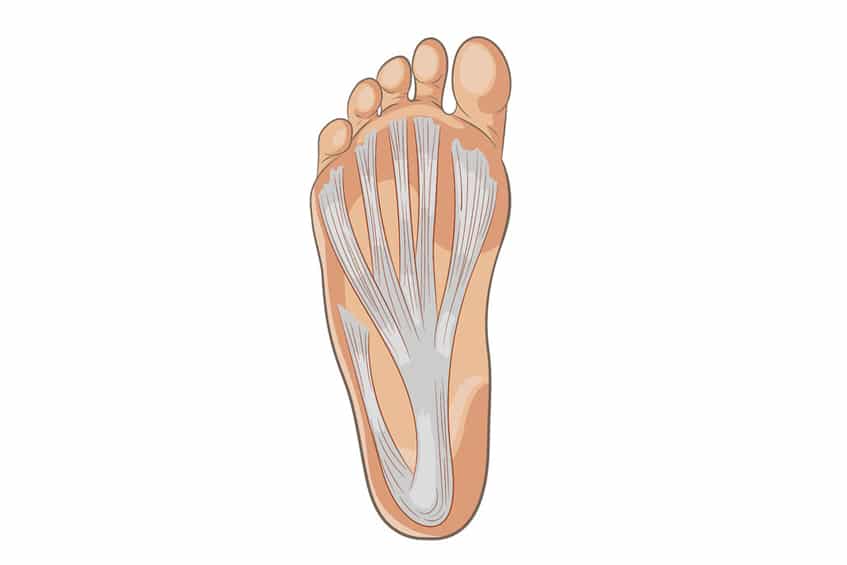Plantar Fasciitis and Massage Treatment
27-Apr-2018
Often a condition of impact sports such as tennis, aerobics or running, plantar fasciitis is an inflammation of the soft tissues on the underside of the foot ranging from the base of the toes to the heel. The cause may not even be in the area where pain and discomfort are felt. Look for tightness, scar tissue or adhesions in the calves or hamstrings. Are the hips tight resulting in a decreased gait distance when running? Is the foot making proper contact during exercise? Is there an under or over-pronation (inward or outward turn) of the leg? The connective tissue along the bottom of the feet can be greatly affected by the distribution of your weight, especially during workouts. As your feet’s built-in shock absorbers, this web of connective tissue, when stressed, can translate into increased inflammation. This is especially true at the insertion points of tendons into bones or the surrounding padded, fleshy areas.
The arch is also a shock absorber, one critical to the architecture of the foot. High arches or ‘flat’ feet (those with little arch) are more likely to experience the pains of plantar fasciitis. Orthotics are a type of prosthetic used to cushion and support the arch and are best customized by a professional specifically for the wearer. They are often made for the activities for which they are used (work, running, standing) and can be switched-out between shoes. Orthotics can also help realign the foot so that it makes proper contact with movement.
Flat shoes or flip-flops do not offer the type of support for wearing over long periods or on hard surfaces. Proper footwear becomes critical in both workouts and between.
Age can also be a contributing factor…as we get older, the integrity of the foot’s architecture declines and the ability for soft tissues to repair becomes slower. For this reason, the condition is more common for those who are active after 40. Added body weight can also play a role, increasing the load-bearing stress.
Deep tissue massage is a combination of techniques applied over calves, hamstrings, Achilles tendon and points along the ankles and feet to lengthen and relax muscle fibers. The idea is to increase flexion and range of motion at the ankle and smooth tight leg muscles. Direct, deep work on the painful areas is not recommended. I often advised clients to ice the area following an intense workout, treating it as an injury.
Manual Therapy journal published an article in September 2013, titled “Deep massage to posterior calf muscles in combination with neural mobilization exercises as a treatment for heel pain: A pilot randomized clinical trial”, explains the efficacy of deep massage used in combination with neural mobilization exercise. 69 patients were involved in a single-blind study randomizing into either the deep massage or ultrasound group. In the study, “. . . therapists massaged the medial and lateral aspects of the posterior calf from both a medial and lateral approach. A mild pain response was generated by deep manipulation using thumbs or elbow,” according to Massage Today. The massage group also received calf stretches and a neural mobilization exercise. The conclusion stated the massage group displayed clinically and statistically significant improvements in comparison to the ultrasound group.
If you are experiencing pain in the bottom of the foot (or feet), contact your healthcare practitioner to evaluate the problem and to find solutions. Often simple solutions or the right bodywork can bring the relief you need…and your feet will love you for it!
Rod Cain is a massage therapist with 26 years of experience in the industry and owns a private practice, Rod Cain Massage Therapy in Burlington, Williston and Essex, Vermont.